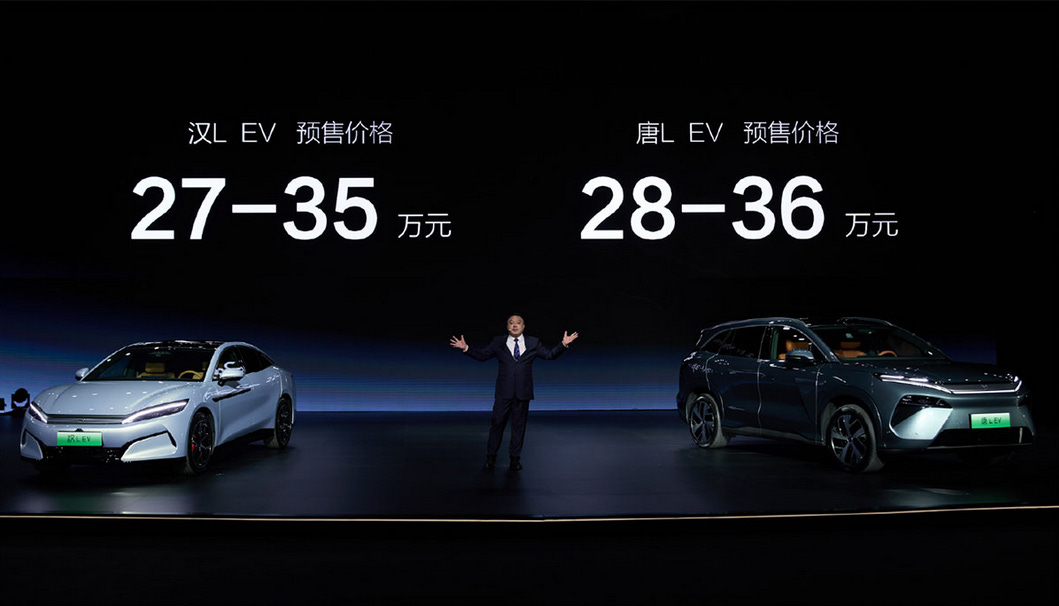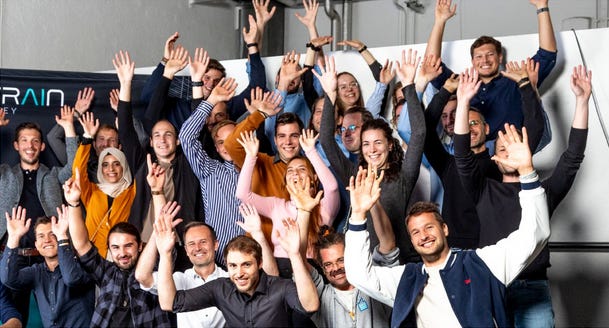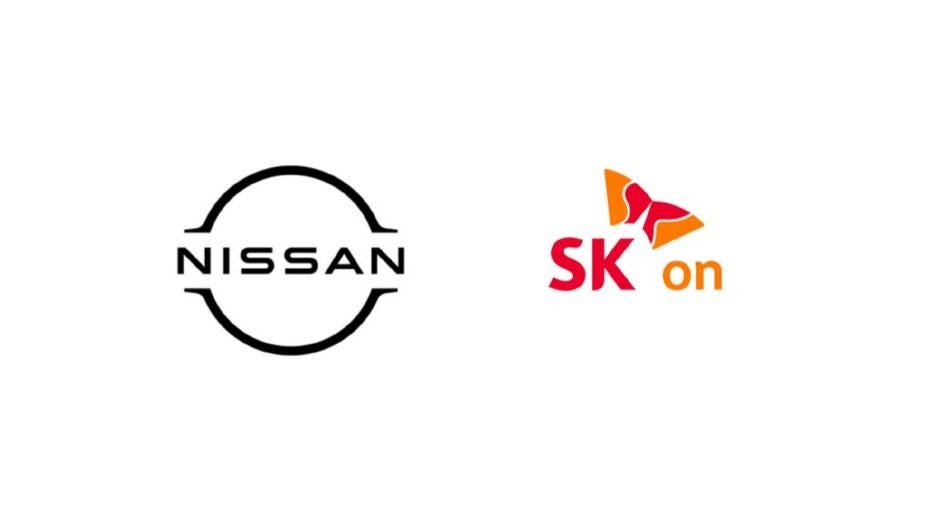The Weekly Potential #20: Battery Insights
This week in the battery industry: BYD's ultra-fast charging, Farasis' battery optimization software, Spain's €699 million state aid, CATL's sodium-ion batteries, ...
Welcome to the 20th edition of The Weekly Potential, your premier source for insights into the battery industry.
This past week brought exciting updates on fast-charging advancements: Farasis unveiled optimization software to boost charging efficiency, BYD introduced a new ultra-fast charging platform capable of adding hundreds of kilometers of range in minutes, and PULSETRAIN secured fresh funding to advance its AI-driven pulse-charging technology for longer-lasting batteries.
As competition intensifies and investment surges, the race to perfect fast-charging technology is overshadowed by Europe’s struggling battery production capabilities, with over 30% of announced projects facing delays or cancellations. However, geopolitical shifts and Brussels’ renewed focus signal a push to streamline policies and resurge local manufacturing.
Let's dive in! 🔋
Lithium Horizons is a reader-supported publication. For deeper insights, including in-depth analysis, the latest developments, and expert insights into the battery, energy, and materials industries, subscribe below.
Ten Key Industry Developments
Farasis Energy launched an advanced simulation software that optimizes battery cell design for fast charging. This tool enables ultra-fast charging—up to 6C for LFP batteries and 5C for ternary cathode batteries, both in pouch format. By using a Reduced Order Modeling (ROM) approach, it slashes simulation times from 8-10 hours to just 10 seconds. (Read more)
Commentary: The tool tackles one of the biggest hurdles to electric vehicle adoption: charging time. It remains to be seen if the same benefits apply to other battery cell formats.
BYD has introduced its innovative "Super E-Platform," a 1,000V architecture enabling ultra-fast charging at 1MW. Debuting in the Han L and Tang L models in China starting April, BYD plans to support this with over 4,000 ultra-fast charging stations nationwide. (Read more)
Commentary: This technology allows EVs to gain approximately 400 kilometers of range in just five minutes, rivaling the speed of refueling gasoline vehicles.

BYD announcement of its Super E-Platform. Source: CNEvPost The European Commission has approved Spain’s €699 million state aid plan to construct 1.8 GWh of utility-scale energy storage. Partially funded by the European Regional Development Fund, the scheme provides direct grants to support projects that enhance grid stability and integrate renewable energy sources. (Read more)
Commentary: In line with EU’s energy transition goals, this funding will allow Spain to continue increasing the penetration of renewable energy sources into its power grid.
CATL is pushing its second generation sodium-ion battery development to surpass 200 Wh/kg and discharge normally at -40°C. Their first generation sodium-ion battery, unveiled in 2021, hit 160 Wh/kg and was able to discharge at -20°C retaining over 90% of its capacity. Second generation is slated to be mass produced from 2027 onward. (Read more)
Commentary: In theory, sodium-ion batteries are direct competitors to LFP due to their better performance at low temperatures, fast charge capabilities and lower cost. In reality, more development is needed.

Rendering of CATL sodium-ion cells. Source: Car News China Theion, a German startup specializing in lithium-sulfur batteries, secured €15 million in a Series-A funding on March 20, 2025. These batteries promise over 1,000 Wh/kg, while costing one-third as much as traditional lithium-ion batteries. The funds will support the transition from small coin cells to larger pouch cells for electric vehicles, aviation, and energy storage. (Read more)
Commentary: Lithium-sulfur batteries could be three-times as energy dense as today’s lithium-ion batteries. Main bottleneck to their commercialization is poor cycle life. It is unclear if Theion has managed to overcome it.
Munich-based PULSETRAIN raised €6.1 million in seed funding to advance its AI-driven pulse-charging battery tech. It extends EV battery life by 80% and is targeted for two-wheelers and commercial vehicles first, with plans to scale across multiple sectors by the late 2020s. (Read more)
Commentary: Balancing fast charging with battery thermal management is the key to enabling faster electric vehicle adoption. PULSETRAIN promises to do exactly that.

PULSETRAIN team. Source: LinkedIn
Xiaomi is bolstering its European battery research by hiring at least five senior executives from BMW. This move includes appointing Rudolf Dittrich, a 15-year BMW veteran, to lead its planned EV R&D center in Munich, Germany. (Read more)
Commentary: As European automotive industry faces unprecedented challenges, Chinese players are stepping in with a strong ability to attract top-tier talent.
SK On will supply Nissan with 100 GWh of U.S.-made, high-nickel EV batteries from 2028-2033 in a $661 million deal, powering 1 million midsize EVs from Nissan’s upgraded Canton, Mississippi plant. (Read more)
Commentary: This partnership came as a result of U.S subsidy policies, shifting Nissan from its previous Chinese supplier, AESC, to enhance eligibility under the Inflation Reduction Act.

Nissan’s and SKOn’s logos. Source: Nissan France-based Novacium has developed third generation of its silicon-anode battery that successfully surpassed 1,000 cycles with over 3,000 mAh capacity and 80% retention. The cells deliver 18% more capacity than traditional graphite benchmark batteries. (Read more)
Commentary: Silicon-based batteries are promising for their potential to store more energy than commercial batteries, but they usually suffer from poor cycle life. Novacium has reached an important milestones with 1,000 cycles.
Samsung SDI is raising $1.38 billion via a rights offering to expand its Hungary plant to 40 GWh/year, fund a $3.5 billion GM joint venture for a 36 GWh/year battery plant in Indiana by 2027, and invest $350 million in solid-state battery lines in South Korea. (Read more)
Commentary: Samsung SDI has been losing market share to Chinese battery giants. This is part of a larger strategy to regain its dominance.
Paper of the Week

A Nature Energy study forecasts Europe’s battery demand to exceed 1 TWh annually by 2030, outpacing domestic production despite ambitious growth plans. Using probabilistic modeling, researchers project a median self-sufficiency rate of just 27% by 2030, with Asian companies likely dominating production capacity due to their early investments.

The analysis clearly shows the need for accelerated battery factory construction and better industrial policies to bolster Europe’s battery ecosystem, warning that without urgent action, the region risks heavy reliance on imports as electric vehicle adoption surges.
On the Go
Michael Barnard of Redefining Energy Tech interviewed Mark O'Malley, Leverhulme Professor of Power Systems at Imperial College London, about the renewable energy transition. Their discussion focused on shifting to an inverter-driven grid, which introduces technical challenges in balancing supply and demand while ensuring stability. A key issue is optimizing grid-following inverters, which dominate today, versus grid-forming inverters, which can independently set voltage and frequency.
Read More
Thank you for reading! We appreciate your engagement and invite you to subscribe for more updates. Please share your thoughts and feedback in the comments below. If there's a specific topic you'd like us to explore in future editions, feel free to let us know in the comments. Your input helps us tailor our content to better meet your interests.




